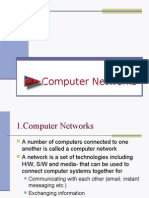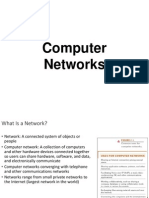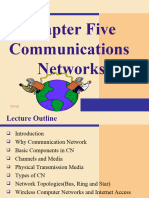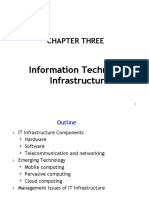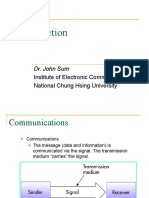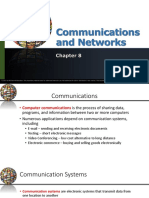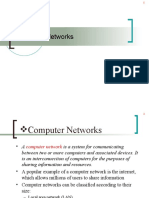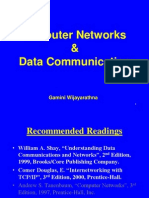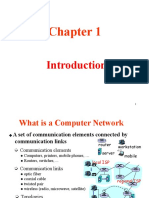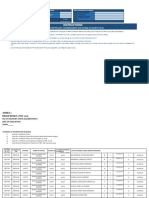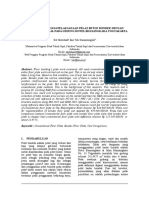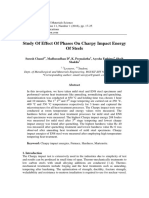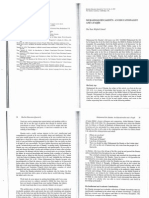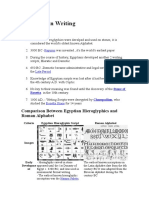100% found this document useful (1 vote)
229 views50 pagesTelecommunications and Computer Networks
This document discusses telecommunications and computer networks. It describes key components of telecommunication systems including computers, input/output devices, communication channels, transmission media like telephone lines, coaxial cables, twisted wire cables, fiber optic cables and wireless transmission. It also covers network topologies like star, bus and ring configurations and the differences between local area networks (LANs) and wide area networks (WANs). Packet switching and different signal types are also summarized.
Uploaded by
api-3710170Copyright
© Attribution Non-Commercial (BY-NC)
We take content rights seriously. If you suspect this is your content, claim it here.
Available Formats
Download as PPT, PDF, TXT or read online on Scribd
100% found this document useful (1 vote)
229 views50 pagesTelecommunications and Computer Networks
This document discusses telecommunications and computer networks. It describes key components of telecommunication systems including computers, input/output devices, communication channels, transmission media like telephone lines, coaxial cables, twisted wire cables, fiber optic cables and wireless transmission. It also covers network topologies like star, bus and ring configurations and the differences between local area networks (LANs) and wide area networks (WANs). Packet switching and different signal types are also summarized.
Uploaded by
api-3710170Copyright
© Attribution Non-Commercial (BY-NC)
We take content rights seriously. If you suspect this is your content, claim it here.
Available Formats
Download as PPT, PDF, TXT or read online on Scribd
/ 50







